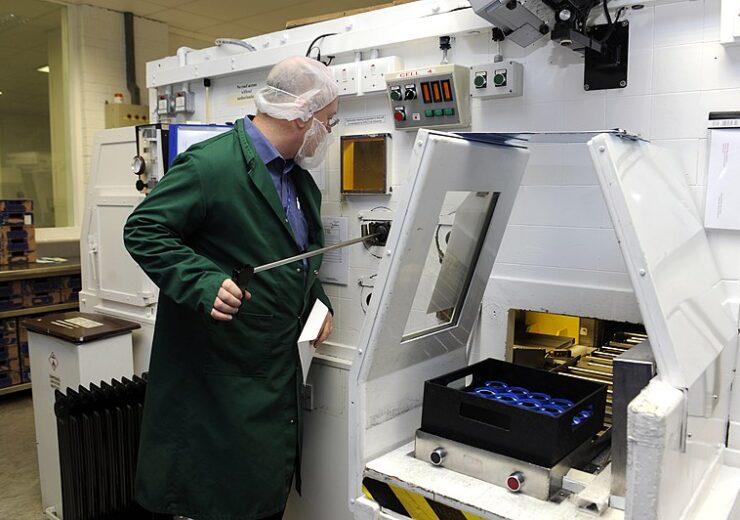GE Healthcare said that the Phase III clinical trial compares PET for striatal dopamine transporter imaging with the company’s DaTscan, a tool used to confirm the diagnosis of Parkinson's disease

Packaging radioactive pharmaceuticals at GE Healthcare's facility in Amersham, England. (Credit: IAEA/ Wikipedia)
US-based GE Healthcare has announced that the first patient has been dosed in Phase III clinical trial in France with a new dopamine transporter for a Positron Emission Tomography (PET) radiopharmaceutical imaging agent.
GE Healthcare is expanding its portfolio with two pipeline radiopharmaceuticals, one for PET and the other for Single-Photon Emission Computed Tomography (SPECT) imaging.
Both imaging agents are designed to aid in the evaluation of adult patients suspected of having Parkinson’s disease, as well as to promote research and enhance patient care.
The company said that its offering, DaTscan, is being used in SPECT imaging in more than 40 countries globally.
The Phase III clinical trial compares PET for striatal dopamine transporter imaging with DaTscan.
PET technology is said to provide a higher spatial resolution than SPECT, which might lead to a sharper picture for easier visual interpretation and diagnosis.
The PET was originally developed by French firm Zionexa, which was acquired by GE’s Pharmaceutical Diagnostic business in 2021.
GE Healthcare Pharmaceutical Diagnostics molecular imaging general manager Julia Casey said: “More than one million doses of DaTscan have already been used around the world in the clinical evaluation of Parkinsonian syndromes.
“Building on our leadership in this space, and to complement DaTscan, we are aiming to offer our customers, in both clinical and research settings, a wider choice of diagnostic tracers across PET and SPECT to suit all needs.
“We continue to invest in products that enable precision health and may help improve clinical outcomes.”
